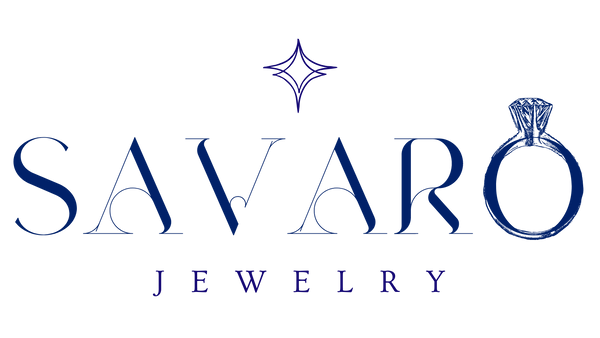When buying a diamond, there's a lot more to consider than just the sparkle. Understanding a diamond’s certification is crucial in ensuring you're getting the quality and value you deserve. Diamond certifications act as a grading report for your gem, verifying its cut, color, clarity, and carat. However, not all certifications are created equal, and knowing the differences between them can save you from potential disappointment down the road.
Let’s break down the most well-known diamond certification labs—GIA, IGI, and EGL—so you can confidently choose the diamond that’s right for you.
GIA (Gemological Institute of America)
 The Gemological Institute of America (GIA) is widely regarded as the gold standard when it comes to diamond certification. Established in 1931, the GIA is known for its strict and consistent grading standards, which is why its reports are considered the most reliable and trusted in the industry. If you’re looking for absolute confidence in the quality of your diamond, a GIA certification is your best bet.
The Gemological Institute of America (GIA) is widely regarded as the gold standard when it comes to diamond certification. Established in 1931, the GIA is known for its strict and consistent grading standards, which is why its reports are considered the most reliable and trusted in the industry. If you’re looking for absolute confidence in the quality of your diamond, a GIA certification is your best bet.
What makes GIA stand out?
- GIA reports are highly respected for their accuracy and objectivity.
- They offer a detailed breakdown of the diamond’s 4Cs, as well as additional information such as fluorescence and any inclusions or blemishes.
- GIA is a nonprofit organization, meaning they have no commercial interest in the sale of diamonds, making their assessments fully impartial.
Who should consider a GIA-certified diamond?
- If you’re looking for a top-tier diamond and want absolute confidence in its quality, a GIA-certified stone is the way to go. Many high-end jewelers only offer GIA-certified diamonds, and for good reason—it’s the certification that commands the most respect in the industry.
IGI (International Gemological Institute)
 The International Gemological Institute (IGI) is another major lab, but when compared to GIA, its grading standards are often viewed as less stringent. IGI is widely used for lab-grown diamonds and lower-cost diamonds sold by mass retailers. While IGI may seem like an attractive option, particularly for more budget-conscious buyers, it’s important to note that IGI’s grading can sometimes be more lenient than what you’d get with GIA.
The International Gemological Institute (IGI) is another major lab, but when compared to GIA, its grading standards are often viewed as less stringent. IGI is widely used for lab-grown diamonds and lower-cost diamonds sold by mass retailers. While IGI may seem like an attractive option, particularly for more budget-conscious buyers, it’s important to note that IGI’s grading can sometimes be more lenient than what you’d get with GIA.
IGI’s Grading Standards:
- IGI reports tend to give higher grades than GIA for similar diamonds, meaning you might think you’re getting a better stone than you really are. For example, an IGI-certified diamond rated as "G" in color might only be rated as "H" or even "I" under GIA’s more rigorous standards.
- IGI is often used by large chain stores for both natural and lab-grown diamonds, but its grades are sometimes seen as inflated, meaning the diamond may not hold the value you think it will.
Who Should Consider IGI-Certified Diamonds?
- While IGI-certified diamonds may appear to be a good deal upfront, buyers should be cautious. If you’re prioritizing price over quality, IGI might seem appealing, but keep in mind that you may be sacrificing accuracy in the grading. For those seeking long-term value and quality, GIA-certified diamonds are a far better choice.
EGL (European Gemological Laboratory)
 EGL (European Gemological Laboratory) certifications can be a bit tricky. While EGL was once widely recognized, its credibility has come under scrutiny in recent years. EGL is known for grading diamonds more generously than both GIA and IGI, which can lead to discrepancies in quality. For example, a diamond rated as a “G” in color by EGL might only be rated as an “H” or “I” by GIA.
EGL (European Gemological Laboratory) certifications can be a bit tricky. While EGL was once widely recognized, its credibility has come under scrutiny in recent years. EGL is known for grading diamonds more generously than both GIA and IGI, which can lead to discrepancies in quality. For example, a diamond rated as a “G” in color by EGL might only be rated as an “H” or “I” by GIA.
EGL's Characteristics:
- EGL certifications tend to overestimate the quality of the diamond compared to GIA or IGI. A diamond graded as “G” in color by EGL may only be considered “H” or “I” by GIA, which can affect its long-term value.
- With multiple branches operating independently (EGL USA, EGL International), it’s important to note that grading standards can vary widely between locations.
Who should consider an EGL-certified diamond?
- Buyers on a tighter budget might be tempted by EGL-certified diamonds because they often appear to offer more value for money. However, we recommend caution, as these diamonds may not hold their value as well, and the grading may not reflect the true quality of the stone.
Which Certification Should You Trust?
After comparing the three major labs, it’s clear that GIA stands out for its unmatched credibility and reliability. When you choose a GIA-certified diamond, you’re getting an independent, impartial assessment from the most trusted lab in the world. There’s no guesswork, no lenient grading—it’s a true reflection of the diamond’s quality.
While IGI and EGL may seem appealing, especially for budget-conscious buyers or those seeking lab-grown options, they don’t quite match up to the accuracy and reputation that GIA offers. A GIA certification is an investment in your peace of mind and ensures you’re getting exactly what you’re paying for.
